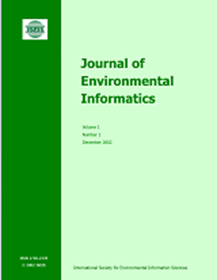利用机器学习和扩散核方法揭示欧亚水獭(Lutra Lutra)空间分布格局与环境因素的关系
IF 5.4
1区 环境科学与生态学
Q1 ENVIRONMENTAL SCIENCES
引用次数: 10
摘要
在韩国,濒临灭绝的欧亚水獭(Lutra Lutra)种群已经在全国范围内恢复。为了研究水獭种群状况,2014 - 2017年,我们对洛东江流域250 ~ 355个地点的水獭种群密度进行了监测。将扩散核方法应用于二值和连续sprt数据。确定了两个地理种群:北部种群和南部种群。在研究期间,北方人口从北向南在广阔的区域内持续增加。相比之下,南方人口分布狭窄,受限于其在工业区的位置。空间自组织图(Geo-SOM)通过关联采样点的地理位置揭示了种群密度与环境因子之间的关系。两个种群都受到人为因素的负面影响,包括靠近工厂和人口密度。然而,2016年注意到所有环境因素(包括景观、食物来源和人为因素)的累积关联,之后水獭种群完全恢复。人口发展趋于稳定,但总体上与环境因素高度相关。扩散核法的结果和Geo-SOM的数据变化一致地呈现出种群扩散的实质性变化(即两个亚种群的合并,以及种群与环境因子之间的完全关联)。扩散核法与Geo-SOM相结合,可以有效地描述完全恢复最后阶段spra数据中种群状态随环境因子的变化。本文章由计算机程序翻译,如有差异,请以英文原文为准。
Spatial Distribution Patterns of Eurasian Otter (Lutra Lutra) in Association with Environmental Factors Unravelled by Machine Learning and Diffusion Kernel Method
In South Korea, the endangered Eurasian otter (Lutra lutra) populations have been recovered throughout the country. To examine the status of otter populations, we monitored spraint densities at 250 ~ 355 sites annually from 2014 to 2017 in the Nakdong River basin. The diffusion kernel method was applied to both binary and continuous spraint data. Two geographical popula - tions were identified: northern and southern populations. The northern population continuously increased over a broad area from north to south during the study period. In contrast, the southern population narrowly dispersed, limited by its location in an industrial area. The spatial self-organizing map (Geo-SOM) revealed associations between spraint densities and environmental factors by correlating the geographic locations of the sampling sites. Both populations were negatively affected by anthropogenic factors, including proximi - ty to factories and human population density. However, cumulative association of all environmental factors, including landscape, food sources, and anthropogenic factors, were noted in 2016 after which otter populations fully recovered. Population development stabilized while exhibiting an overall high association with environmental factors. The results of the diffusion kernel method and data variation according to the Geo-SOM consistently presented substantial change in population dispersal (i.e. the merge of two subpopulations, and complete associations between spraint and environmental factors). The combination of the diffusion kernel method and Geo-SOM was effective in portraying temporal changes in population states in association with environmental factors based on spra int data in the last phase of full recovery.
求助全文
通过发布文献求助,成功后即可免费获取论文全文。
去求助
来源期刊

Journal of Environmental Informatics
ENVIRONMENTAL SCIENCES-
CiteScore
12.40
自引率
2.90%
发文量
7
审稿时长
24 months
期刊介绍:
Journal of Environmental Informatics (JEI) is an international, peer-reviewed, and interdisciplinary publication designed to foster research innovation and discovery on basic science and information technology for addressing various environmental problems. The journal aims to motivate and enhance the integration of science and technology to help develop sustainable solutions that are consensus-oriented, risk-informed, scientifically-based and cost-effective. JEI serves researchers, educators and practitioners who are interested in theoretical and/or applied aspects of environmental science, regardless of disciplinary boundaries. The topics addressed by the journal include:
- Planning of energy, environmental and ecological management systems
- Simulation, optimization and Environmental decision support
- Environmental geomatics - GIS, RS and other spatial information technologies
- Informatics for environmental chemistry and biochemistry
- Environmental applications of functional materials
- Environmental phenomena at atomic, molecular and macromolecular scales
- Modeling of chemical, biological and environmental processes
- Modeling of biotechnological systems for enhanced pollution mitigation
- Computer graphics and visualization for environmental decision support
- Artificial intelligence and expert systems for environmental applications
- Environmental statistics and risk analysis
- Climate modeling, downscaling, impact assessment, and adaptation planning
- Other areas of environmental systems science and information technology.
 求助内容:
求助内容: 应助结果提醒方式:
应助结果提醒方式:


